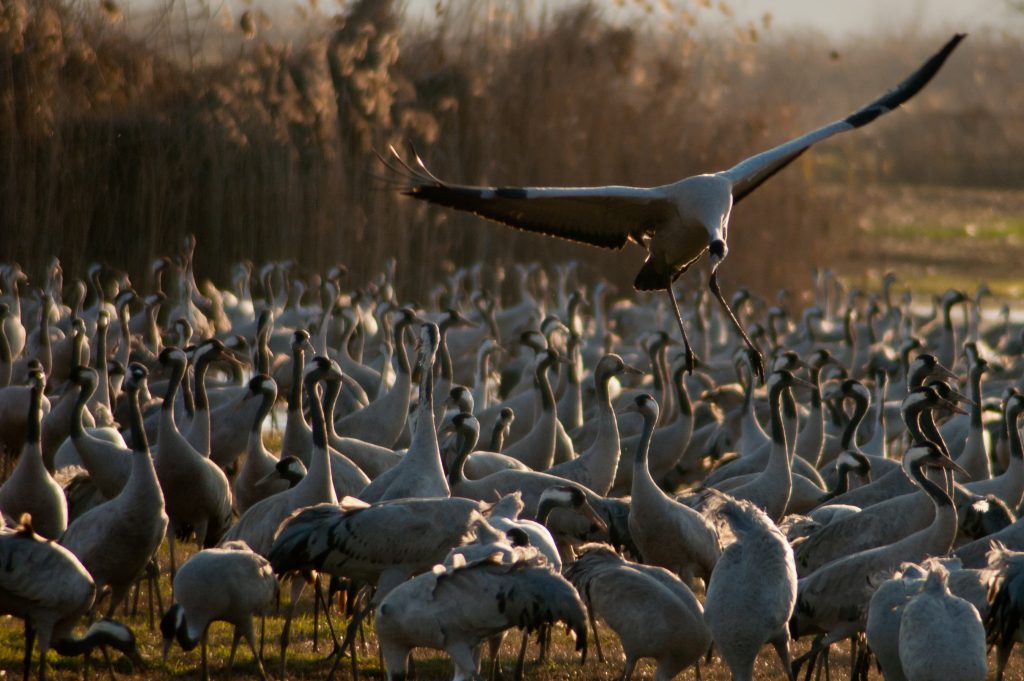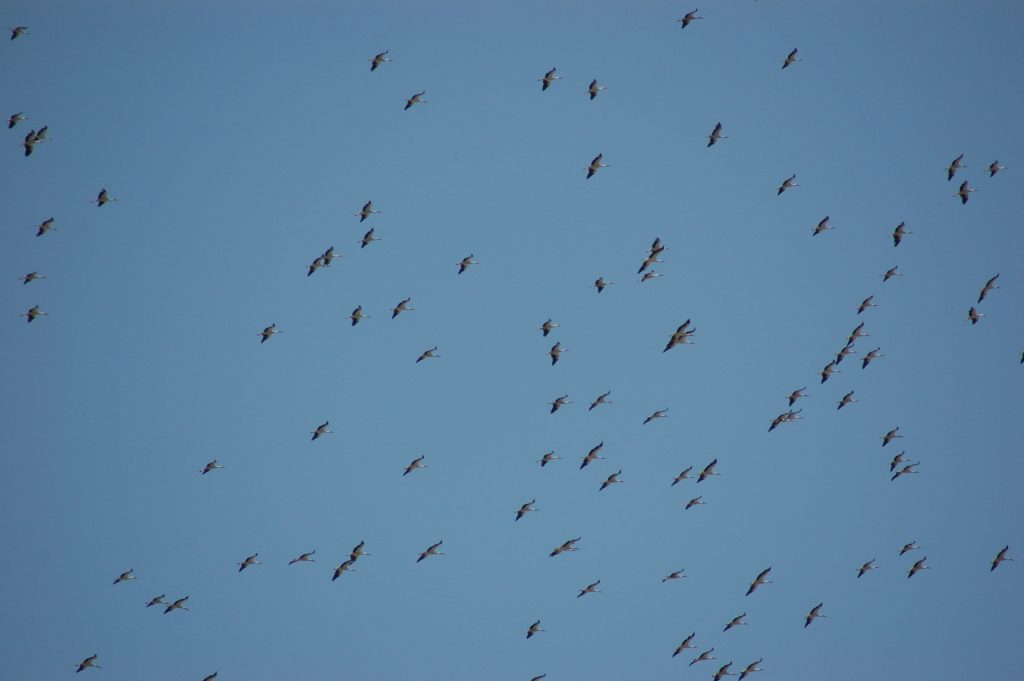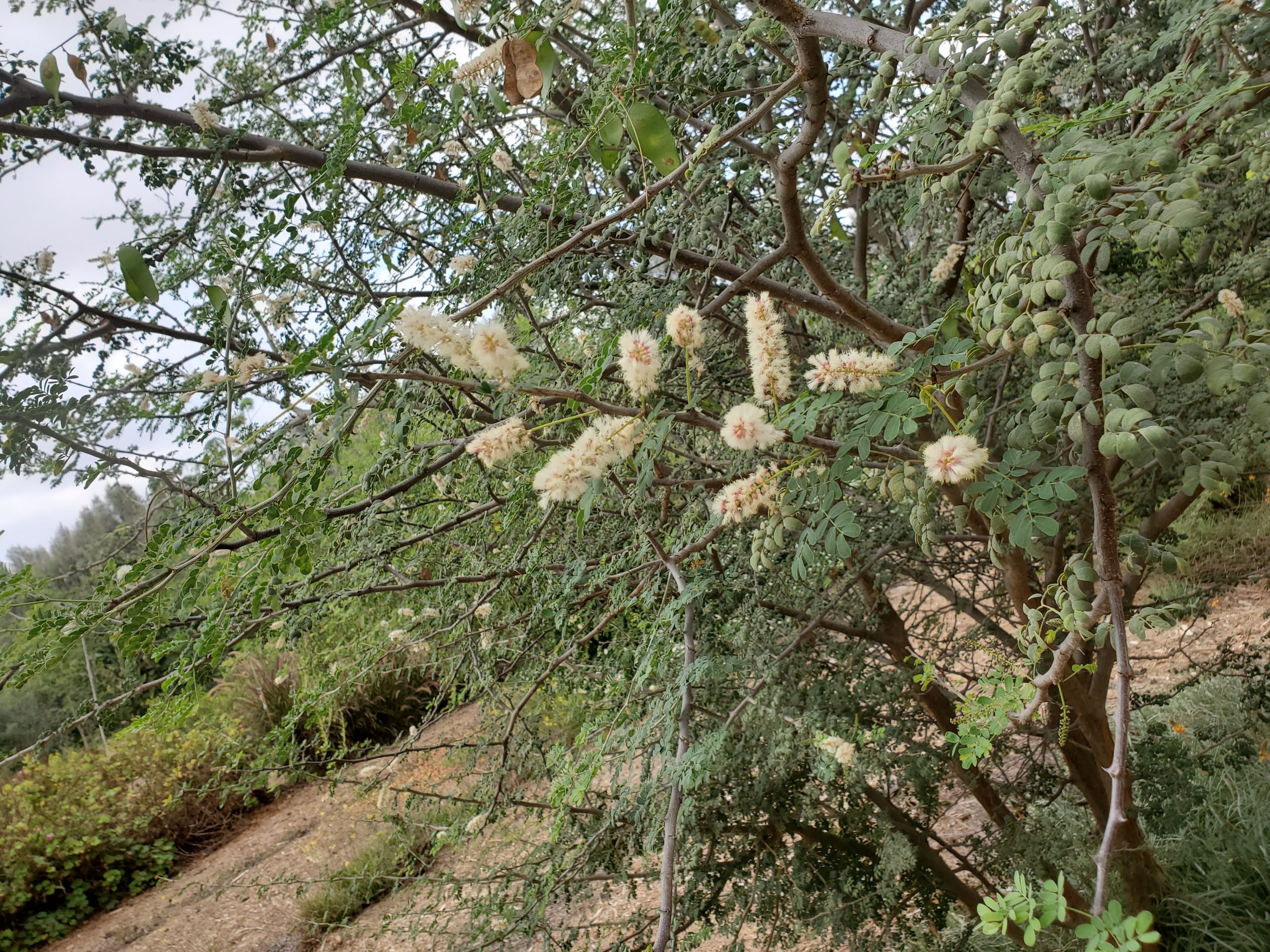What makes the birds tick?
July 16, 2020In a first-of-its-kind study, Israeli scientists, in collaboration with Keren Kayemet LeYisrael -the Jewish National Fund (KKL-JNF), set out to discover what makes millions of migratory birds spend their resting hours in the forests throughout the country and to further support this important behavior of wild birds.
Among wildlife lovers, Israel is famous for its enormous bird migration, a spectacle that can be best witnessed around the Hula Valley in the north of Israel. Up to 500 million birds of hundreds of different species cross through Israel on their long, arduous journey from Europe to Africa to spend the winter months in warmer climates.
What is less known is that many of these birds are European forest birds who come to Israel to spend their resting days in forests around the country, before continuing their migration to the African continent. Now, for the first time, Israeli scientists, together with Keren Kayemet LeYisrael – the Jewish National Fund(KKL-JNF), are exploring the unknown link between migratory birds and different forest characteristics to find out what makes the large flocks prefer certain areas for a stopover.

Finding the Birds
“What many people don’t know is that migratory birds have to rest every day in certain areas before they can continue their journey. Most migratory birds fly by night and rest during the day. The resting places have to meet certain requirements, such as water, food, and protection from predators,” says Nir Sapir, Associate Professor at the Department of Evolutionary and Environmental Biology at the University of Haifa and head of the research project.
“When we are speaking about bird migration in Israel, we are speaking about a phenomenon that involves several hundreds of millions of birds migrating each season – It is massive,” says Sapir. It is like an invisible flowing river, which can be made visible with the help of certain technologies, in our case radar,” Sapir continues.
For that purpose, Inbal Golstein-Schekler, a PhD student of Sapir who is leading the project, is using weather radars that are able to cover an area in a radius of 70 kilometers from each radar and instead of tracking individual birds, she uses the data to quantify the birds as they depart in the evening from their staging sites.
The first person to have done this kind of spatial analysis in the US is Jeffrey Buler from the University of Delaware, who is now, together with his technician Jacklyn Smolinsky, helping JNF and the researchers to do the same study in Israel.
According to Sapir, they know from different studies in the US that the birds select certain areas that are more suitable for them. This varying density of birds can inform us about the factors that make them select a specific resting place. “For example, the birds might select tall trees or very developed forests for resting, but avoid other open areas because they don’t provide enough shelter or food,” says Sapir.
The scientists are using data from three different metrological radars, which are operated by the Israeli Metrological Services and the Israel Air Force for weather forecasts – one in northern Israel, one in the center, and one in the south of the country. “We are using the raw data of these radars and run some algorithms, to extract the spatial densities of these birds during the migration season,” says Sapir.
“This is stage one – the mapping of the distribution of the birds,“ he adds.

The Next Stages
After having analyzed and processed the data in the first stage of the project, the scientists are now at the beginning of the second stage. In this stage, the scientists are studying why the birds choose specific forests as resting places over other areas and try to match the data of the birds with habitat properties.
“We use geographic information in order to explore the correlation between areas with high density (a lot of birds) and the features of the land and the habitat,” explains Sapir.
In a later stage, the scientist will move from nighttime migratory birds to day-active birds, which are mainly birds of prey and storks.
“These birds usually fly in flocks, rest at night, and take off in the morning. But the places where they rest, most likely also have certain characteristics,” says Sapir.
The scientist hopes that parts of the radar mappings first results will be available in several months, giving the scientists a better idea about the characteristics of the staging areas.

What could be changed?
Once the researchers have gathered enough data about the migration patterns of the birds, they hope to be able to give advice to KKL-JNF about how forest management efforts might positively affect the birds’ resting behavior.
“The goal is to have a large-scale perspective on these two distinct groups of birds, the nocturnal (night-time) and the diurnal (day-time) birds, and to find out what they are looking for. Afterward, we can provide recommendations to KKL-JNF on how to run and manage their forests in order to preserve, maintain or even improve the sites that are important to the birds in order to foster their migration through Israel,” Sapir explains.
According to Sapir, this can be done, for instance, by switching to other species of trees, increasing or decreasing forest height, or adding more understory. There are many ways to change forest properties to make the sites more favorable for the birds.
“For example, if we find out that the birds concentrate in a very small area of the forests, which is characterized by broadleaf trees, we can make the recommendation to JNF to plant more broadleaves and fewer conifers in the future,” says Sapir.
While the scientists don’t have any preliminary findings yet, studies in the US have shown that migratory birds there prefer old-growth and developed forests. Surprisingly they seem to like city parks too.
“This is another aspect we would like to explore here in Israel. One of the radars is actually positioned not far from the Tel Aviv Metropolitan Area, which gives us the opportunity to find out if these birds are using city parks disproportionally high as it has been described in the US,” Sapir says.
According to Sapir, the study’s uniqueness stems not only from the fact that it is the first-of-its-kind in terms of scale, but also conducted across different climates (Mediterranean and desert climate), which might have an additional effect on the resting patterns of the birds.
“The study is done across an environmental gradient; the north, which is mostly planted and natural forest; central Israel, which is densely populated and dominated by urban areas and agriculture, and the south, which is desert,” says Sapir.
“Ultimately, we believe that the study will also contribute to the conservation of migratory birds in Israel. The resting time during migration is a very vulnerable time for these birds, during which they have to replenish their energy reserves. Therefore stopping in suitable conditions is critical to their survival,” Sapir concludes.
This ZAVIT article was also published in Ynetnews on 07/11/2020.







